Bucket List Trips: Powder Highway Road Trip
Powder aims to feature only the best products and services. If you buy something via one of our links, we may earn a commission.
NOTE: We all have a bucket list of ski trips, but prepping for your next big adventure can seem pretty overwhelming when it comes to choosing what to bring. I’ve been fortunate enough to travel the world for the last decade with skis in tow, and have learned a thing or two worth sharing about what kind of gear to bring to maximize the fun and minimize the stress. It’s worth noting that my recommendations are independent, come from learning from my own mistakes, and highlight things I’m truly excited about. This series is aimed at the generalist skier who’s interested in it all - powder, freeriding, some hiking and touring, the occasional shit-your-pants steep skiing moment, and most of all, adventure!
Check out the rest of our Bucket List Trips Guides here.
This one is probably the ultimate definition of a skiing road trip: exploring Canada’s Powder Highway mid-winter. There are quite a few ways to do it, but one thing they all have in common is deep, dry snow that can be accessed via chairlift, snow cat, helicopter, or on foot. Traveling through interior BC in the midst of a huge storm cycle eating poutine and ketchup chips and enjoying some elaborate Caesars can be a transformative experience, one that has made many Americans ponder why they don’t just pack up and move north for good. If you can figure that one out, please let me know what you learn, but in the meantime here are a few ideas on gear that are going to make your next (temporary) visit the best it can be.
First off, like on any good skiing road trip, bring two pairs of skis if you plan on riding both inbounds and in the backcountry. The terrain that’s accessible inbounds at places like Kicking Horse, Revelstoke, or Red Mountain (all classic destinations on the loop) is world-class gnar, complete with huge cliffs, inbounds couloirs, steep and deep tree skiing, and plenty of mellow groomers to return to the lift. Leave the confines of the resort, and you’ll step into hands down the best ski touring terrain on the planet. Bring your a-game, some extra fitness, and be dialed on your backcountry safety, because these mountains are the real deal.
Skis: 110-120 Underfoot Mid Weight Touring Ski + 105-115 underfoot resort ski
You’re going on this trip to ski as much pow as possible, so pack accordingly. For resort days, I’ve been the happiest with a fat directional freeride ski like the new Atomic Maverick 115 or Kastle Paragon 107, or something a bit heavier and damper like the Black Crows Corvus or Rossignol Sender Free 110. The agility of a more freestyle oriented powder twin-tip (versus a directional shape) is fun in pow, but a directional shape will be much more stable for high speed tree runs at Revelstoke or Fernie or mobbing through tight chokes and cliff bands at Kicking Horse, besides the wide platform will keep you from feeling the bottom no matter what. Keep those edges sharp, and these will perform well enough on the groomers to get you back the lift grinning ear to ear. Pair these with your favorite alpine binding.
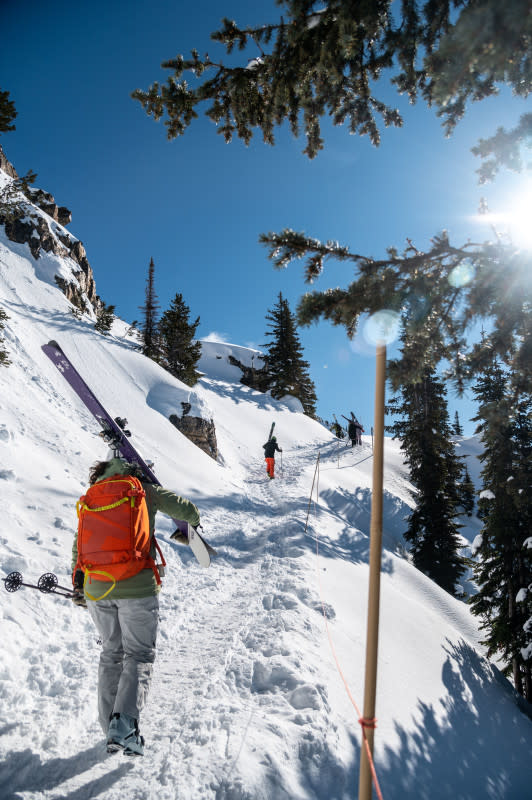
Photo: Max Ritter
For touring skis, I’d highly recommend going fat. Sure, there’s big vert involved in getting to the goods in places like Rogers Pass, but you’ll be glad to have some extra platform when you’re ready to drop into that pillow line you’ve been eyeing from the parking lot. I’ve never been a huge fan of ski touring on skis with twin tips or a ton of tail rocker - I have a hard time getting my skin tail clips to stay put, and a center mount makes kick turns much more difficult, but the playful terrain and deep pow of interior BC is the place for this kind of ski in the backcountry. I’d look for something in the 1700-1900 gram range.
Some new standouts in this category are Line’s Vision 108, Black Crows Draco Freebird, or just go ahead and ride the reverse-camber 4FRNT Hoji in its natural habitat. A backcountry freestyle-oriented ski like the Atomic Bent 120 or the Armada Whitewalker 116 would also be a great option. Like always, I’ll recommend a minimalist tech binding for these - it’s a great place to save weight without sacrificing performance. ATKs are still my absolute go-tos, but I’ve been intrigued by the newly released Tyrolia Almonte 12 - a fully featured 325 gram tech binding with a freeride spacer.
Boots: One Pair of Freetouring Boots With 2 Liners
This is actually kind of a tough one, and the minimalist in me screams to bring just one boot! I’ll go ahead and follow that line of thought with one caveat: bring two pairs of liners that fit it. Having the ability to beef up an already stiff touring boot like the newly updated Tecnica Zero G, Dynafit Ridge or Atomic Hawx XTD with a tighter-fitting and even stiffer liner makes a huge difference for skiing hard in the resort. Your favorite fat resort skis just won’t feel the same if you’re not skiing powerful boots.
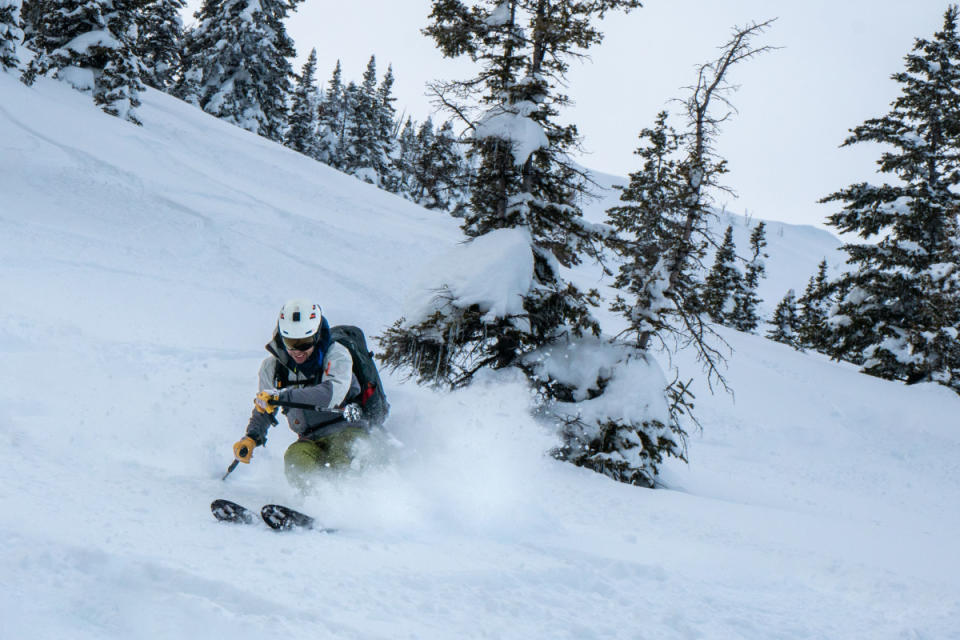
Photo: Max Ritter
So here’s the idea for resort days: you take the shells of your favorite high-performance touring boot and add a 15mm High Density Intuition Wrap liner to take up some extra space and add that extra oomph. On the skintrack, switch back to using your go-to touring liner. If those happen to be the same, congratulations, you’ve just won the ski boot lottery! This way, you have the simplicity of one boot that can do both things well. Just make sure your alpine bindings are compatible with these boots before you leave home.
Pack: 25-30 Liter Lightweight Avalanche Airbag
A lightweight airbag is a great companion for this kind of trip. Of course, an airbag shouldn’t replace performing your due diligence to ensure your own safety, but it’s certainly nice to have the extra insurance when skiing loads of unfamiliar terrain in an unfamiliar snowpack.
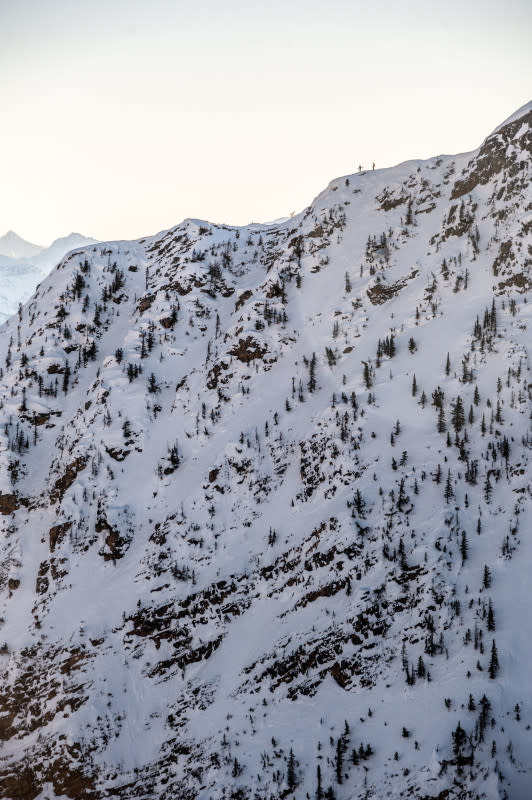
Photo: Max Ritter
A mid-size pack in the 20-25 liter range will suit you well for both resort/sidecountry skiing and longer ski tours with plenty of space for the essentials without weighing you down or being too bulky. Dyneema packs are all the rage these days, and Scott’s new Patrol Ultralight E2 electric airbag is a fantastic sub 1000g featherweight option made with the unmistakable white superfabric. You’ll look super trendy, I promise. If you’re in the need for something bigger or more featured, Ortovox’s LiTRIC line of packs comes in various sizes and also offers the convenience and svelteness of an electric fan-based system.
Outerwear: Lightweight Hardshell Kit + Extra Puffy Jackets
Interior BC isn’t particularly wet, but it can sure be damn cold. Just earlier this year, a truly arctic cold snap actually forced most of the resorts on the Powder Highway to close for a few days. Temps of -40 F just don’t translate well to ski resort operation, not to mention that hanging out in the backcountry isn’t really a good idea in those temps. For this kind of trip, layering and extra insulation are crucial to staying comfortable, and I think that there’s no reason to bring more than one kit.
I find that a lightweight hardshell kit (I don’t think Gore-Tex Pro is necessary here) works best - you’ll have waterproofing for storm days, and better breathability and free movement for long days on the skintrack. Some great Gore Tex alternatives are Helly Hansen’s Elevation Infinity 3.0 Jacket and Bibs made of their proprietary LIFA Infinity fabric, or TREW’s Le Skieur Kit made with their 3L7D material (the jacket comes in a pretty cool purple).
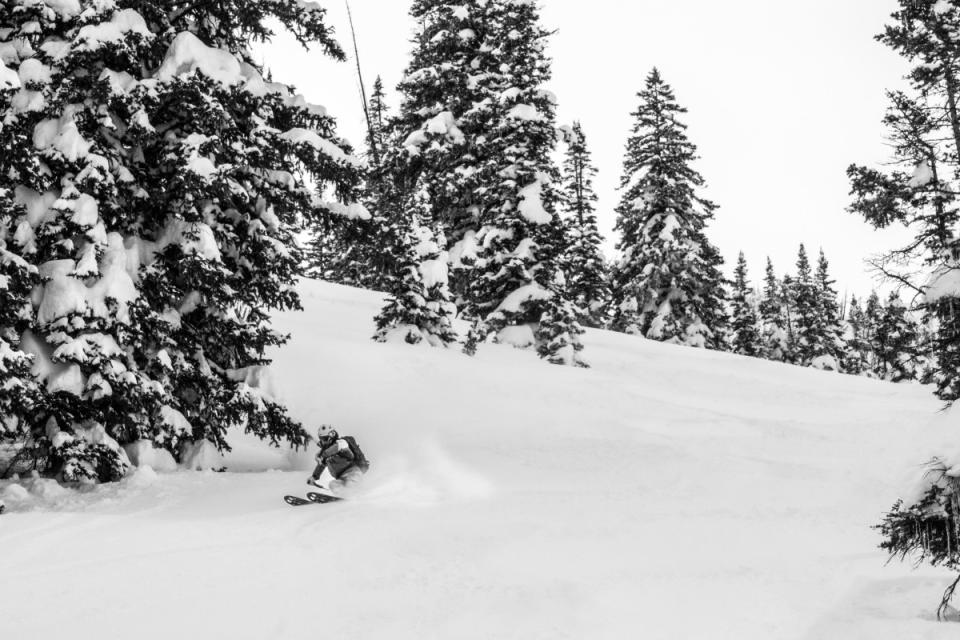
Photo: Max Ritter
Bring an extra puffy jacket because it can get cold very quickly, even on spring days. What I look for is a belay parka designed for alpine climbers freezing their butts off while belaying their friends who are scared out of their minds above them. Really, it’s a jacket that only comes out when I'm stopped during a break, digging a snowpit, standing on a summit, or in an emergency. Otherwise, it stays in my pack. I’m still searching for the elusive super-warm puffy jacket that packs down really small, but a few that I’ve found that come pretty close that I’m happy with. Down is definitely warmer, but won’t work when wet (it loses its loft, and therefore its insulating capabilities). Synthetic insulation will stay warmer but typically doesn’t compress as well. Two great options I’ve found are RAB’s Generator Alpine Jacket, a super-warm durable and packable synthetic option, and Mammut’s Meron IN 900-fill down jacket.
Accessories and some beta:
I’d certainly suggest bringing some dedicated apres gear that will make hot-tubbing, enjoying caesars and poutine at the base lodge, and finding friends in the parking lot much more fun. Comfy shoes go a really long way here after your feet have spent all day dying slow and painful deaths in your ski boots. Snow boots are great for walking through deep snow, and definitely bring a pair of those, but I’ve recently re-discovered the magic of knit sneakers after a long day of skiing. Soft shoes feel like pillows on your feet, they tend to be much more breathable and less stinky than boots, and they’re much nicer to drive long distances in. SOLE might be best known for their custom insoles, but they just released an unfairly comfortable casual shoe, the Jasper Chukka, which I’ve probably worn more than I should have at this point. They’re like all-mountain Allbirds. If it’s going to be really snowy, a pair of trusty Fubukis or XtraTufs will do the trick.
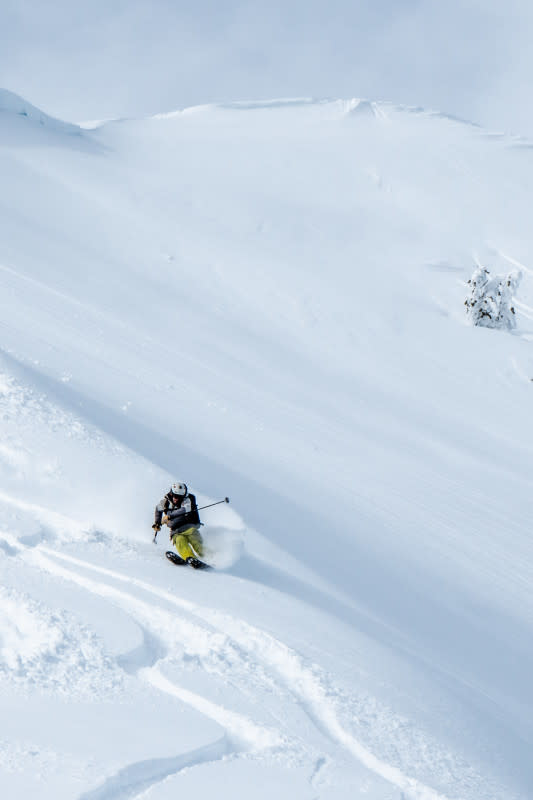
Photo: Max Ritter
Finding up-to-date backcountry and weather conditions can be tough when you’re traveling, but I will say that the Canada-wide avalanche.ca forecasting system is one of the best in the world. Click anywhere on the map, and you’ll find lots of official avalanche forecasts and recent reports from guides, recreationalists, and other backcountry users that are attached to locations. It’s a great place to start.

